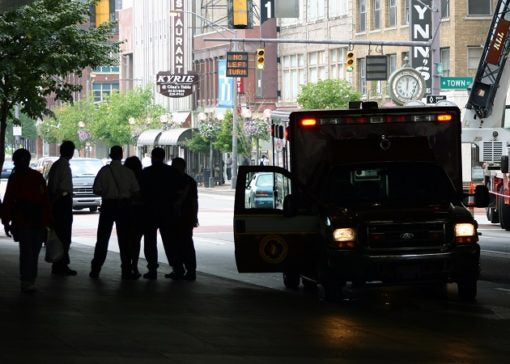Paramedics take part in patient transports and carry them out themselves. In this profession, you work very closely with the paramedics and the injured people are competently cared for in emergency measures. The injured persons are made fit to be transported and the people are treated on the spot until the emergency doctor arrives. This means that paramedics work directly at the scene of the accident , guide and carry out patient transport and work directly with the injured persons.

 Determining the exact length of the training is quite difficult. This form of training comprises at least 520 hours, but it can also be more hours. Depending on whether the course is full-time or part-time, such a course lasts between 3 and 9 months. The training is divided into theoretical aspects and an internship in a clinic or at a rescue station. The various theoretical knowledge can be applied in the internship, which makes comprehensive learning possible. The material to be learned includes, for example, medical basics and rules for caring for people in an emergency. The preparation of an emergency vehicle is taught, as is the exact procedure at the scene, and a lot is taught about the structure of the rescue service itself and about working with other emergency services. It is therefore a comprehensive training with many medical details and with a lot of applicable expertise.
Determining the exact length of the training is quite difficult. This form of training comprises at least 520 hours, but it can also be more hours. Depending on whether the course is full-time or part-time, such a course lasts between 3 and 9 months. The training is divided into theoretical aspects and an internship in a clinic or at a rescue station. The various theoretical knowledge can be applied in the internship, which makes comprehensive learning possible. The material to be learned includes, for example, medical basics and rules for caring for people in an emergency. The preparation of an emergency vehicle is taught, as is the exact procedure at the scene, and a lot is taught about the structure of the rescue service itself and about working with other emergency services. It is therefore a comprehensive training with many medical details and with a lot of applicable expertise.
 It is relatively difficult to describe a concrete day-to-day work of a paramedic , since all operations are different and it is also not possible to plan when a new operation is due. If an operation is necessary, then the people in this profession carry it out or drive along and take care of the patients on site. People have to be cared for and life support measures are also carried out, with very close cooperation with all other participants in the rescue operation. However, the everyday life of paramedics also includes precise documentation of the operations and patient care in the emergency vehicle. Paramedics therefore work very closely with the patients and have to get to the scene quickly and with concentration at very different times in order to save lives and treat injured people.
It is relatively difficult to describe a concrete day-to-day work of a paramedic , since all operations are different and it is also not possible to plan when a new operation is due. If an operation is necessary, then the people in this profession carry it out or drive along and take care of the patients on site. People have to be cared for and life support measures are also carried out, with very close cooperation with all other participants in the rescue operation. However, the everyday life of paramedics also includes precise documentation of the operations and patient care in the emergency vehicle. Paramedics therefore work very closely with the patients and have to get to the scene quickly and with concentration at very different times in order to save lives and treat injured people.

Personal requirements at work
A high level of resilience is really of great importance in this profession, since the rescue operations are carried out under time pressure and people with serious and sometimes fatal injuries must be treated safely and competently. In addition, concentrated work must be possible as well as a very fast reaction time and sensitive handling of injured and sometimes completely upset people must also be possible. Paramedics must never lose their heads and must also be able to work well in a team, as there is direct cooperation with other emergency services. Another personal requirement in this job is the willingness to work in shifts and to work very irregularly overall, since emergencies cannot be calculated.Prerequisites for the job / training / studies
At least a secondary school diploma is expected for the profession as a paramedic, although in many cases a somewhat higher school education is available. However, there are other requirements for training in this profession, and these include, for example, a medical certificate that certifies the health suitability for this demanding profession. Most applicants should be at least 17 or 18 years old and in many cases a driver's license is required. A police clearance certificate is almost always required, which must show that the applicants have not had any proceedings against them. A first-aid course is one of the basic requirements in this profession and should therefore be completed before applying. Otherwise, knowledge of biology and good grades in this school subject are an advantage for admission to the apprenticeship. This knowledge is important, as basic medical knowledge is conveyed and, for example, it is explained how the blood circulation works and how breathing can be stabilized.The training / the qualification

locations
First and foremost, paramedics can work in patient transport and rescue services. But people with this profession are also used in blood donation services and in the fire brigade. In addition, employment with disaster relief organizations and mountain rescue services may be an option. Paramedics are needed wherever emergency services need to be driven and injured people need to be cared for after an accident.career development opportunities
First, after successful training, there is usually a specialization in a specific area, such as patient transport or service in an ambulance. However, there is also the opportunity to develop further in this profession. On the one hand, further training courses can be completed. A good example would be an exam to become a First Aid and Life Saving Instructor. A degree in the field of human medicine or in medical and rescue services would also be possible and represents a good opportunity to advance in this profession. In addition to such further training measures, paramedics must also constantly expand their specialist knowledge and should always be up to date.The everyday life of the paramedic









